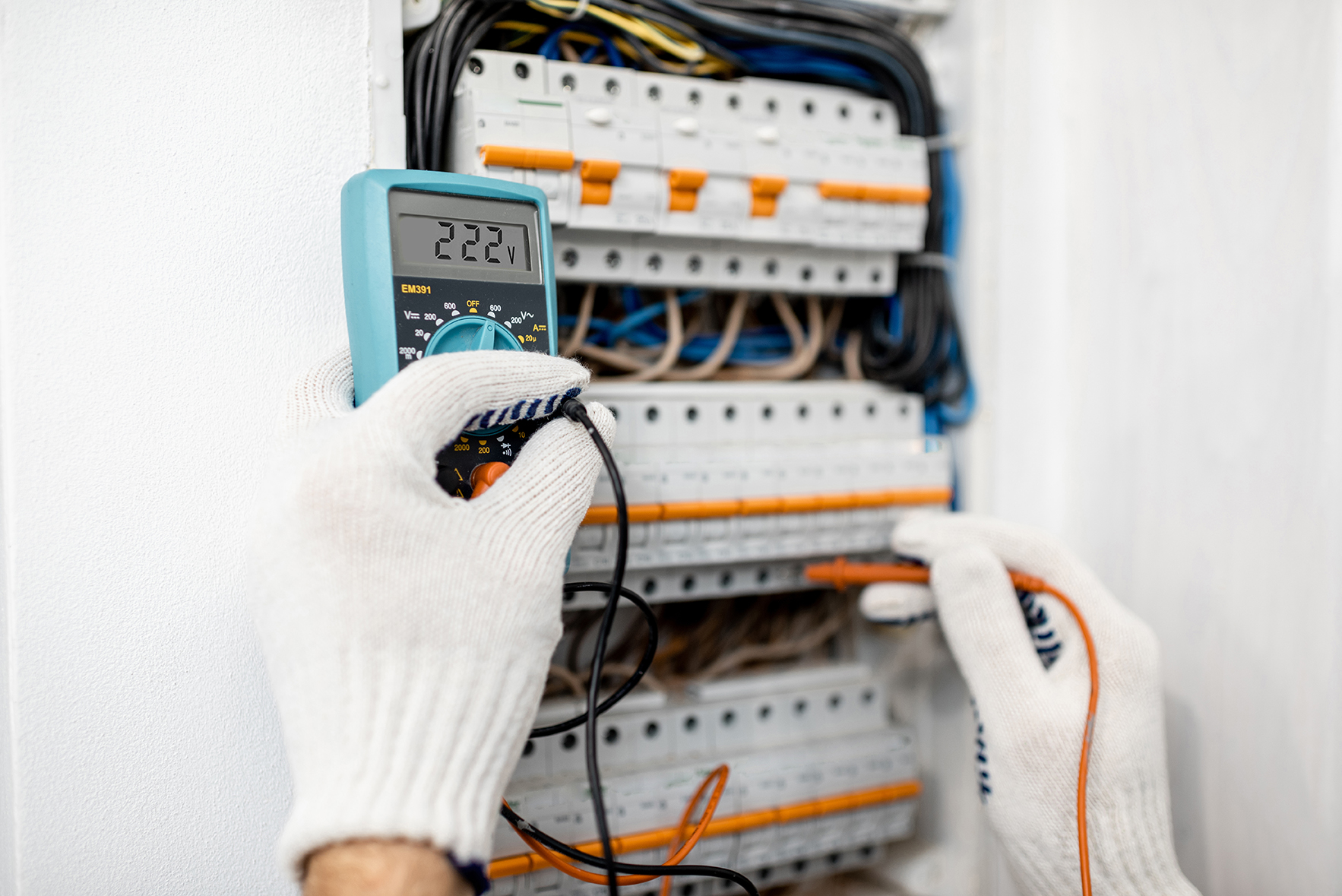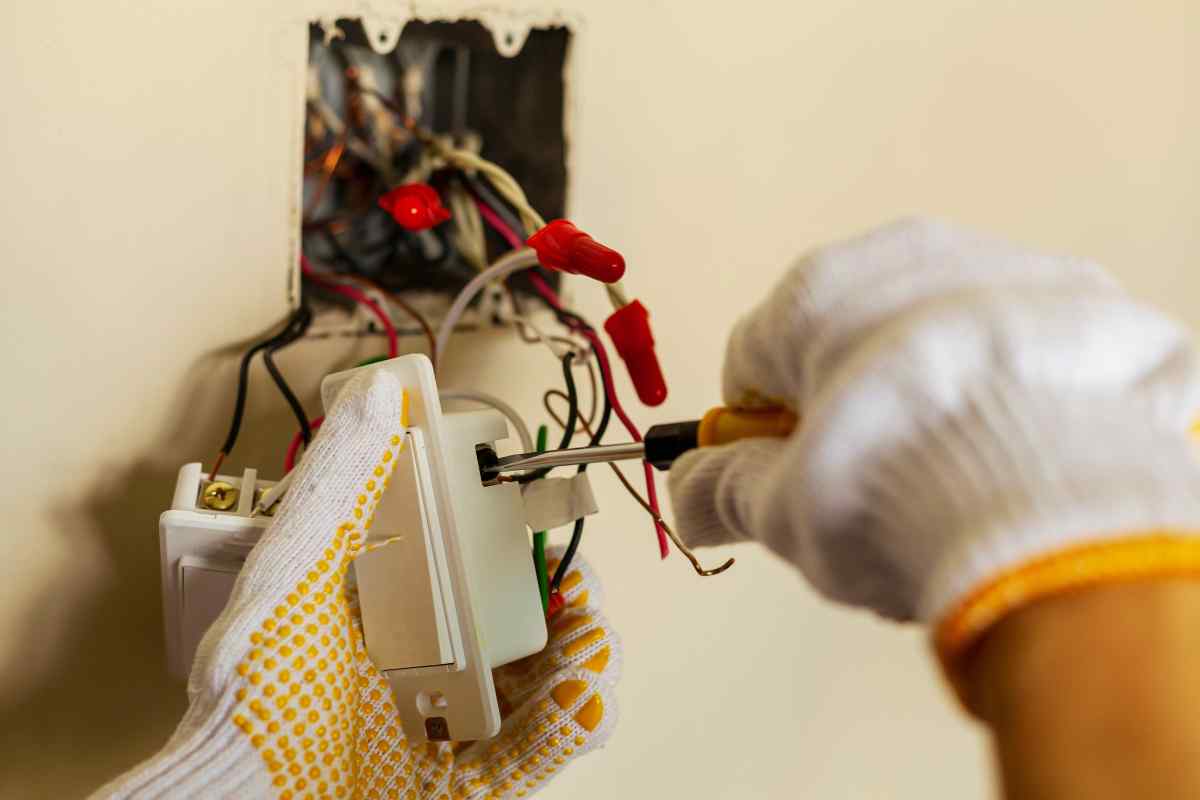Usual Electrical Troubles Every House Owner Should Find out about
Property owners commonly run into different electric issues that can influence safety and security and capability. Concerns like flickering lights and tripped breaker are much more usual than many recognize. These scenarios can suggest much deeper electrical worries that warrant interest. Understanding the signs and risks connected with obsolete wiring and dead outlets is important. What procedures can be taken to protect against these problems? Checking out these usual electric problems might disclose important insights for maintaining a secure home atmosphere.

Flickering Lights: Causes and Solutions
Why do some property owners experience flickering lights? Flickering lights can be a common nuisance, typically indicating underlying electrical problems. One key cause is defective or loosened connections within lighting fixtures or circuitry, which can cause intermittent power supply. Additionally, utilizing high-wattage devices on the same circuit may trigger voltage variations, causing lowering or flickering. An additional potential problem is an overloaded circuit, where also numerous tools attract power simultaneously, straining the electric system. Furthermore, obsolete or abject wiring can add to inconsistent electrical flow. In many cases, flickering lights may signify a trouble with the home's electric panel or service line. House owners must attend to flickering lights immediately to stay clear of prospective hazards. Solutions may include tightening up connections, redistributing device tons, or consulting a qualified electrical expert for a thorough evaluation. Determining the source can help assure a secure and secure electrical system in the home.
Tripped Circuit Breakers: What You Required to Know
Have homeowners ever questioned what triggers their circuit breakers to trip unexpectedly? This usual problem commonly develops from an overload of electric circuits, where also lots of devices attract power all at once. In such instances, the circuit breaker works as a security mechanism, disrupting the flow of electrical energy to avoid overheating and potential threats. One more constant reason is a brief circuit, which occurs when a real-time wire calls a neutral wire, developing a surge of electrical power that journeys the breaker. Ground mistakes can additionally result in stumbled breakers; these take place when a live cord touches the ground or a based surface, positioning significant security threats. Home owners need to on a regular basis evaluate their use of high-wattage appliances to avoid straining circuits. In addition, comprehending the function of circuit breakers can help them react properly throughout a trip, guaranteeing their home continues to be well-kept and secure.
Obsolete Wiring: Dangers and indicators
Outdated circuitry can present significant dangers to home owners, typically going unnoticed till problems emerge. Homes built prior to the 1980s may still have light weight aluminum wiring or knob-and-tube systems, which are no more taken into consideration risk-free. Indicators of out-of-date wiring include flickering lights, often tripped circuit breakers, or burning smells near outlets. These indicators may recommend that the electrical system is overburdened or deteriorating.Additionally, house owners could discover blister marks around buttons or outlets, which can suggest getting too hot. The risk of electric fires substantially raises with obsolete electrical wiring, as these systems were not made to take care of contemporary electrical tons. Property owners are urged to have their circuitry examined routinely, specifically when renovating or including new appliances. By recognizing these indicators early, they can stay clear of unsafe scenarios and keep a safer living environment. Updating to existing electric criteria is a positive action in preserving home security and efficiency.
Often Blown Fuses: Fixing Tips
Frequent blown integrates can show underlying electrical problems that might come from obsolete electrical wiring or overloaded circuits. Property owners experiencing this problem ought to initially determine the home appliances attached to the impacted circuit. It is recommended to avoid making use of multiple high-wattage gadgets at the same time, as this can lead to circuit overload. If the issue persists, examining the circuit box for indications of wear or damage is crucial; a damaged fuse box might require replacement.Additionally, looking for loosened connections within the circuit can aid stop future incidents. Home owners must likewise validate that the integrates being used are of the right amperage, as utilizing an incorrect fuse can intensify the problem. If these fixing pointers do not fix the concern, consulting a qualified electrician is suggested to examine the electrical system additionally. Dealing with these worries without delay can aid mitigate risks and guarantee the safety of the home's electrical facilities.
Dead Electrical Outlets: Usual Reasons and Repairs
When a homeowner experiences a dead outlet, it can typically be a source of aggravation and confusion. Numerous usual reasons might lead to this issue. One constant wrongdoer is a tripped breaker, which can be easily reset. Home owners need to check their electric panel to check if any kind of breakers are in the off position. An additional opportunity is a malfunctioning outlet itself, which may call for replacement. Additionally, loosened electrical wiring connections within the electrical outlet can interrupt power circulation, making evaluation essential.Sometimes, the issue might come from an overloaded circuit, specifically when multiple devices are connected. In such situations, rearranging the electrical lots can resolve the concern. Homeowners need to also take into consideration the age of their electrical wiring; older systems might require updates to satisfy modern electric needs. If these actions do not Accredited Service Provider Level 2 Electrician correct the scenario, getting in touch with a licensed electrical expert is advisable to assure security and correct medical diagnosis.
Electrical Shocks: When to Be Worried
How can house owners establish whether an electrical shock warrants worry? House owners must initially assess the intensity and context of the shock. A light static shock, commonly really felt when touching steel objects, is normally safe and typical. If the shock happens while engaging with a plugged-in device or electrical outlet, it may show a more serious issue.The place and regularity of the shocks are essential. Repeated shocks from the exact same source, especially in wet areas like kitchen areas or washrooms, might indicate damaged wiring or inadequate grounding. House owners must likewise consider the feeling of the shock; a shock that triggers pain or contraction is a lot more disconcerting than a simple tingle.If there's any type of uncertainty, it is suggested to get in touch with a qualified electrician. Overlooking prospective electric dangers can cause major security risks, consisting of fire or severe injury.
Overloaded Circuits: Prevention and Safety Procedures
Overloaded circuits present substantial dangers in domestic settings, frequently resulting in electric fires or devices damages (Accredited Service Provider Level 2 Electrician). House owners should recognize the signs of an overloaded circuit, such as regularly stumbled breakers or lowering lights. Implementing preventative safety practices can assist alleviate these dangers and guarantee a much safer living atmosphere
Acknowledging Overloaded Circuits
What signs suggest that a circuit may be overloaded? Property owners need to be alert for several crucial indicators. Often tripped circuit breakers or blown integrates suggest extreme load on the circuit. Dimming or flickering lights, particularly when other appliances are in use, can symbolize a poor power supply. In addition, electrical outlets or buttons that really feel warm to the touch might indicate getting too hot, a prospective fire risk. Uncommon humming audios from electrical outlets also warrant focus, as they can represent electric issues. If devices run inefficiently or stop working to begin, it may be a sign of an overloaded circuit. Identifying these indications early can aid prevent significant electrical issues and advertise a much safer home environment.
Preventive Safety Practices
To keep a reliable and risk-free electrical system, home owners have to carry out precautionary safety methods that resolve possible circuit overloads. One effective measure is to prevent linking way too many tools to a solitary electrical outlet, as this can surpass the circuit's capacity. Making use of power strips with integrated breaker can assist disperse power securely. Home owners need to likewise regularly check cords and appliances for damage and change her comment is here any malfunctioning equipment immediately. It is vital to guarantee that breaker are working correctly and to be familiar with the total power level being used in each circuit. Additionally, speaking with a qualified electrical expert for periodic inspections can identify potential problems before they rise, assuring a more secure living atmosphere and prolonging the life expectancy of electric systems.
Often Asked Inquiries
How Typically Should I Have My Electric System Inspected?
Normal assessments of electrical systems are advised every 3 to 5 years. House owners must think about a lot more constant checks if they experience issues, undertake renovations, or live in older residential properties to assure safety and security and conformity.
Can I Take Care Of Electrical Problems Myself or Work With an Expert?

What Are the Signs of an Electric Fire Threat?
Indicators of an electrical fire risk consist of frequently tripped circuit breakers, flickering lights, shedding smells, tarnished outlets, or cozy, buzzing cords. Property owners ought to remain alert and seek expert assistance if any one of these signs are existing.
How Do I Know if My Home Demands an Electric Upgrade?
To establish if a home needs an electrical upgrade, indicators include regular breaker journeys, obsolete circuitry, inadequate outlets, flickering lights, and the visibility of older electrical panels, showing prospective safety and security threats and ineffectiveness.
Exist Particular Safety Tips for Do It Yourself Electric Work?
When thinking about DIY electric work, More Help one need to constantly switch off power, utilize protected tools, validate circuit performance, comply with neighborhood codes, and seek advice from experts for complicated tasks to assure security and avoid mishaps. Another possible issue is an overloaded circuit, where as well several gadgets attract power simultaneously, stressing the electric system. The danger of electrical fires markedly enhances with obsolete electrical wiring, as these systems were not developed to take care of modern-day electrical loads. Regular blown merges can show underlying electric problems that might stem from out-of-date wiring or overloaded circuits. To preserve a safe and effective electric system, home owners have to implement precautionary security practices that attend to prospective circuit overloads. Level 2 Electrician. Indications of an electrical fire threat include often stumbled circuit breakers, flickering lights, shedding smells, tarnished outlets, or warm, buzzing cables
Comments on “Electrical safety checklist by a ASP Level 2 Electrician”